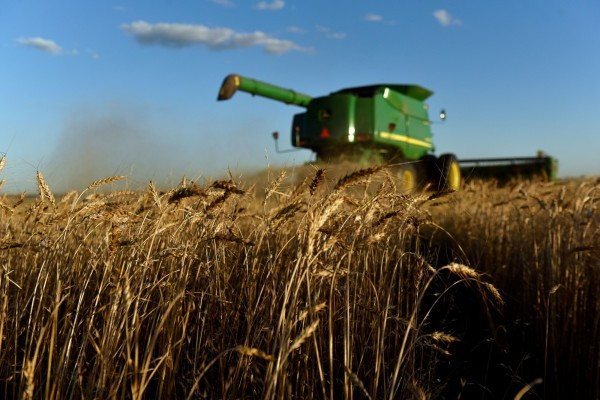Due to extreme weather conditions, key wheat-producing regions in the Northern Hemisphere are grappling with quality issues. Europe has faced detrimental rains, leading to the risk of wheat mold, while North America's unprecedented dry spell has affected crop yields. Now, wheat importers are turning their gaze towards Southern Hemisphere nations, which have not yet begun their harvest season, hoping to fill the demand gaps of various countries.
Baked goods like bread and pasta heavily depend on high-quality wheat. The milling quality of wheat is closely linked to the grain's hardness, which in turn is influenced by sufficient water, fertilization, and sunlight.
Dan Basse, President of Chicago-based agricultural consulting firm AgResource, commented that high-quality milling wheat from the Northern Hemisphere will decrease. Market attention is now shifting to Southern Hemisphere exporters, with hopes that countries like Argentina and Australia will export more crops with high protein content.
Southern Hemisphere Producers Under Pressure
However, major grain-producing countries in the Southern Hemisphere are also facing supply challenges. Alexander Karavaytsev, a senior economist at the International Grain Council, noted that Argentina's sown area is below expectations. Grain quality in parts of Europe is concerning, and two other main exporters - the U.S. and Canada - are grappling with drought, intensifying supply pressures.
Excessive rainfall in Europe is impeding harvests, raising concerns about wheat quality. The European Union, one of the primary wheat-growing regions and the second-largest global exporter, has experienced increased rainfall levels over the past month. This surge in rain has affected harvesting operations and caused mature wheat to sprout and mold.
France, one of the region's top two producers, faced minimal impact, having harvested most of its crops before the rainy conditions. However, Germany, situated further north, faced more severe consequences.
The German Farmers' Association (DBV) reported that as of early August, only about 20% of their wheat and rye crops had been harvested, with roughly half of the winter rapeseed still in the fields. Katharina Geiger, a crop production policy advisor at the association, expressed concerns for farmers in northern Germany, given the persistent rainfall. Due to the moisture, fungus growth could spike, rendering the grain inedible. German grain handler Agravis echoed these concerns, highlighting delays in harvest and worries over below-average protein levels in the wheat.
Italy, in southern Europe, is grappling with similar challenges. Rossella Polito, a wheat producer from the Puglia region in southern Italy, who also operates a social media platform focusing on global wheat market information, conveyed that continuous abnormal rain has affected all stages of wheat growth in Italy, making quality their prime concern this year.
She elaborated that the compromised quality, coupled with low inventory levels from the previous business season, has resulted in skyrocketing prices for durum wheat in Italy, especially the best quality varieties. She anticipates Italy's demand for imported high-quality wheat this year to surpass previous years, especially given that rainfall during May 1 to mid-June equaled what typically falls over 5-6 months.
Uncertainty in Ukraine and Russia
Relying on other major grain producers like Ukraine and Russia presents its uncertainties.
After a record-breaking season, Russia expects another bumper harvest. However, excessive rainfall in its southern grain regions might mean the grain's quality could be below average. According to data from the Russian Grain Quality Assessment Center, as of July 31, about 74% of harvested wheat was of food-grade quality, a drop from 91% during the same period last year.
The situation in Ukraine is even more concerning. Data from UkrAgroConsult indicates that only 35%-40% of the wheat might reach milling quality, marking a ten-year low. Ukrainian farmers, apart from dealing with wet conditions, have war-related restrictions on inputs like fertilizers. Moreover, the collapse of the Black Sea Grain Agreement has limited Ukraine's routes to the global grain market.
During wheat's critical growth period, North America experienced dry conditions, which is generally favorable for grain quality. However, the prolonged drought curtailed production, potentially reducing export capabilities.
In a July 12 crop yield report, the U.S. Department of Agriculture projected a 16% decline in hard wheat yield for 2023, estimating it at 54 million bushels. Cliff Jamieson, a grain analyst at DTN Canada, referencing a report from the Canadian Grain Commission, anticipates Canada's wheat inventory for 2023-2024 to be at an all-time low, signaling tightening supply in the coming year.
In June, Australia's agriculture sector predicted a 34% drop in wheat production for 2023-2024, falling below a ten-year average. Australia, the world's second-largest wheat exporter, mainly supplies Asian buyers, including China, Indonesia, and Japan.
Another wild card is India's recent ban on rice exports. As the world's largest rice exporter, responsible for over 40% of the global total, India's decision in late July has added to worries over a tightening wheat supply. This move was followed by similar measures from countries like the UAE and Russia.
Dan Basse of AgResource voiced concerns that if the rice shortage continues to escalate, people might turn to wheat as an alternative, potentially making the global food supply crisis even more severe than the onset of the Russia-Ukraine conflict.






